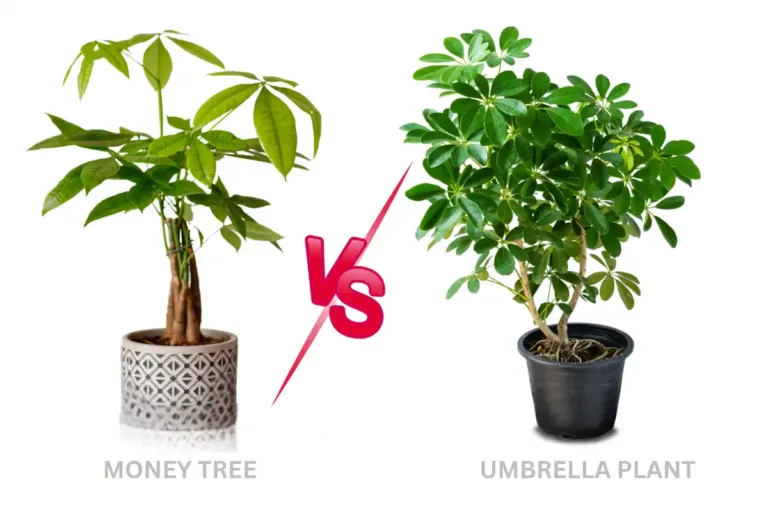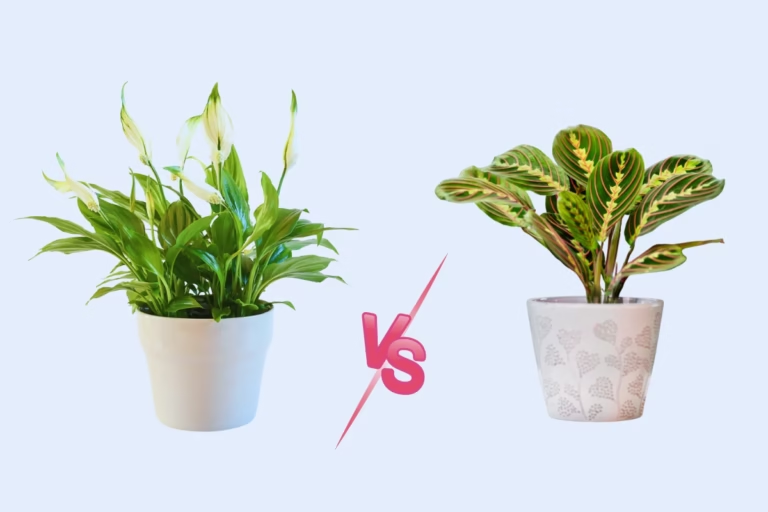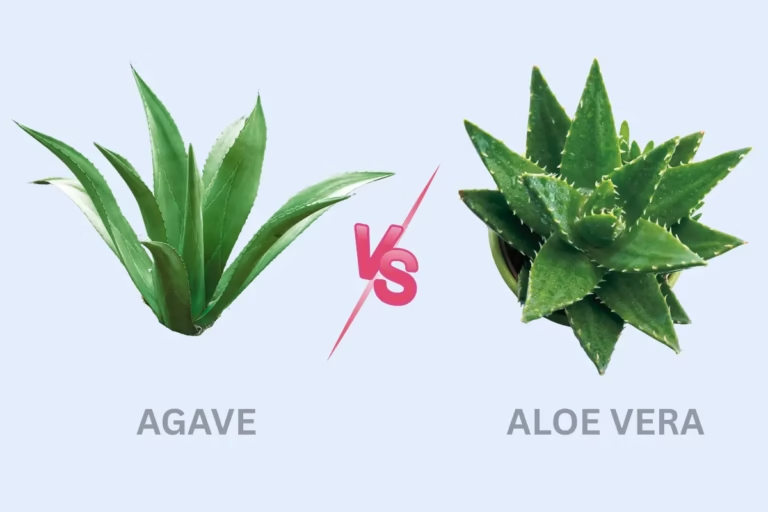Aglaonema Vs Dieffenbachia: Compare and Choose the Best One

You’ve picked two stunning low-light indoor plants that’ll jazz up your home—one with air-purifying magic and gorgeous variegated foliage (hint: it’s a slow-growing tropical beauty), and the other? A fast-growing tropical showstopper with large, dramatic leaves… but a word of caution: it packs a toxic punch if nibbled! Both are crazy popular for their easy-care vibes, but which suits you? You need to have a look on the chinese evergreen Vs dumb cane. Tell me—are you team ‘pet-safe and steady’ or ‘bold and needs careful placement’? Let’s dig in!
Dumb Cane vs Chinese Evergreen: Quick Guide
Feature | Chinese Evergreen (Aglaonema) | Dumb Cane (Dieffenbachia) |
|---|---|---|
Scientific Name | Aglaonema spp. | Dieffenbachia spp. |
Family | Araceae (Arum family) | Araceae (Arum family) |
Common Names | Aglaonema, Philippine Evergreen, Poison Dart Plant | Dieffenbachia, Leopard Lily, Mother-in-Law’s Plant |
Native Region | Tropical Southeast Asia (China, Philippines, Indonesia) | Tropical Americas (Brazil, Costa Rica, Caribbean) |
Mature Size | 1–3 feet tall (slow-growing) | 3–6 feet tall (fast-growing) |
Leaf Shape/Color | Lance-shaped, variegated (silver, pink, red, dark green) | Oval, large with white/yellow marbling |
Toxicity | Mildly toxic (irritates mouth if ingested) | Highly toxic (causes swelling, temporary muteness) |
Lifespan | 5–10 years (with proper care) | 5–15 years (long-lived if maintained) |
Growth Rate | Slow | Fast |
Special Notes | NASA-approved air purifier | Sap used historically as a torture tool (!) |
what is Aglaonema?
“Meet your chill, low-maintenance roommate—thrives in dim corners, flaunts air-purifying variegated leaves (silver, pink, or red!), and won’t throw a fit if you skip watering. Mildly toxic but won’t drama-queen your pets. Perfect for ‘set it and forget it’ plant parents!”

what is Dumb Cane?
“This diva grows FAST, demands bright (but indirect) spotlight, and flaunts huge, painterly leaves. But BEWARE: its toxic sap can mute your mouth (literally ‘Dumb’ Cane!)—keep away from kids/pets. For those who love high-reward, high-risk greenery!”

Aglaonema vs Dumb Cane: Key Differences
Physical Appearence
“Imagine nature’s watercolor palette—compact, bushy, with lush, lance-shaped leaves splashed in silver, pink, or deep green, so its your Chinese Evergreen . Some varieties look like they’ve been dusted with glitter! Grows modestly (1-3 feet), perfect for tabletops or shelves.”
“Picture a tropical mini-tree—thick, cane-like stems shooting up to 5 feet, crowned with large, oval leaves marbled in creamy yellow or white, So that’s your Dieffenbachia . Like a living stained-glass window—bold, tall, and impossible to miss!”
Quick ID Trick:
- Aglaonema: “Short, colorful, and shy.”
- Dieffenbachia: “Tall, dramatic, and loud.”
Watering Needs
Watering is nominated point in Chinese Evergreen Care which prefers drying out between drinks—water only when the top inch or two of soil feels dry to avoid root rot. It’s drought-tolerant and forgives the occasional forgetful waterer. In contrast, the Dumb Cane likes consistently moist (but not soggy) soil. Letting it dry out too much leads to drooping leaves, while overwatering causes yellowing. Both hate “wet feet,” so always use pots with drainage holes.
Light Requirements
Aglaonemas are shade-tolerant superstars, doing well in low to medium indirect light—just keep them out of harsh direct sun, which scorches their leaves. Darker green varieties handle dimmer spots better than variegated ones. Dieffenbachias crave bright, indirect light (near an east or north window is ideal). Too little light makes them leggy, while direct sun burns their foliage.
Soil Preferences
For Aglaonema, a light, well-draining mix of peat moss and perlite works best—it hates heavy, waterlogged soils. Adding a bit of orchid bark or charcoal improves aeration. Dieffenbachia, on the other hand, prefers a richer, slightly chunkier mix—combine potting soil with perlite and a handful of compost for nutrients. Avoid dense garden soil for both, as it suffocates roots.
Temperature & Humidity
Chinese Evergreens are adaptable, thriving in average home temperatures (65–80°F) and tolerating dry air, though they appreciate occasional misting. Dumb Canes are more demanding—they love warmth (65–75°F) and high humidity (60%+). Low humidity causes brown leaf edges, so a pebble tray or humidifier is a must. Keep both away from cold drafts and sudden temperature swings.
Fertilizing
Feed Chinese Evergreens monthly in spring and summer with a balanced (10-10-10) liquid fertilizer diluted to half strength. Skip fertilizing in fall and winter. Dumb Canes are hungrier—feed them every 6 weeks in the growing season with a 20-20-20 fertilizer, but reduce strength to avoid salt buildup. Both benefit from a soil flush every few months.
Potting & Repotting
Aglaonemas are slow growers, needing repotting every 2–3 years when roots peek out of the drainage holes. Use a slightly larger pot with fresh mix. Dieffenbachias grow faster and may need repotting every 1–2 years. When repotting, loosen the roots gently and upgrade to a pot just 1–2 inches wider to prevent overwatering.
Common Pests
1. Spider Mites
- Signs: Tiny webs, yellow speckling on leaves.
- Fix: Wipe leaves with neem oil or insecticidal soap. Increase humidity (mites hate moisture).
2. Mealybugs
- Signs: White, cottony clumps in leaf joints.
- Fix: Dab with rubbing alcohol (70%) using a Q-tip. Repeat weekly until gone.
3. Aphids
- Signs: Sticky residue, curled new growth.
- Fix: Spray with water to dislodge, then apply neem oil.
4. Scale Insects
- Signs: Brown, bumpy spots on stems/leaves.
- Fix: Scrape off manually, then treat with horticultural oil.
Prevention Tip:
- Inspect new plants before bringing them home.
- Quarantine infected plants immediately.
- Wipe leaves monthly with a damp cloth to deter pests.
Common Issues with fixes of these plants
Yellow Leaves
- Overwatering? Check soil—if soggy, repot in fresh mix and reduce watering.
- Underwatering? Crispy edges mean it’s thirsty. Water deeply but less frequently.
- Nutrient Deficiency? Use a balanced fertilizer (but don’t overdo it).
Brown Leaf Tips
- Low humidity? Mist leaves or use a pebble tray.
- Tap water chemicals? Use filtered/rainwater if possible.
Drooping Leaves
- Thirsty Dumb Cane? Water immediately—it perks up fast.
- Cold shock? Move away from drafts (both hate temps below 60°F).
Leggy Growth (Sparse Leaves)
- Not enough light? Move to brighter indirect light (especially for Dieffenbachia).
Toxicity Alert!
- Dumb Cane: Highly toxic (contains calcium oxalate crystals). Causes mouth swelling if chewed—keep away from pets/kids.
- Chinese Evergreen: Mildly toxic (same crystals, less concentrated). May irritate mouths but rarely severe.
Pet-Friendly Alternative: Try a Parlor Palm or Spider Plant if safety is a concern.
Who Fits Your Space: Aglaonema or Dumb Cane?
choose Chinese Evergreen
- Perfect for beginners – Thrives on neglect, tolerates low light, and forgives missed waterings.
- Air-purifying superstar – Removes toxins like formaldehyde and benzene from your home.
- Stylish & versatile – With stunning variegated leaves (silver, pink, red), it’s a living decoration.
- Pet-friendly(ish) – Mildly toxic but unlikely to cause severe harm (unlike Dumb Cane).
- Slow grower – Won’t outgrow its space quickly, meaning less repotting hassle.

Best for: Busy plant parents, low-light apartments, or anyone who wants a fuss-free, pretty plant.
choose dumb cane
- Fast & dramatic growth – Quickly fills empty corners with lush, large leaves.
- Striking visual impact – Bold variegation (white/yellow marbling) makes it a focal point.
- Loves humidity – Ideal for bathrooms or kitchens (just keep it away from pets/kids).
- Rewarding challenge – If you enjoy tending to plants, it’s fun to watch it thrive under care.
- Propagates easily – Grow new plants from stem cuttings (unlike slower Aglaonemas).

Best for: Experienced plant lovers, bright spaces, or those wanting a bold, fast-growing centerpiece.
Related: Peace Lily vs Prayer Plant: Key Differences and Similarities
Final Decision? Ask Yourself:
- “Do I want low-maintenance or high-reward?” Aglaonema = easy, Dieffenbachia = showy.
- “Is safety a priority?” Pets/kids? Lean toward Aglaonema.
- “What’s my light situation?” Low light? Aglaonema. Bright indirect light? Dieffenbachia.
Or… why not both? Balance the drama of Dumb Cane with the chill vibes of Chinese Evergreen! Which one’s winning your heart?






